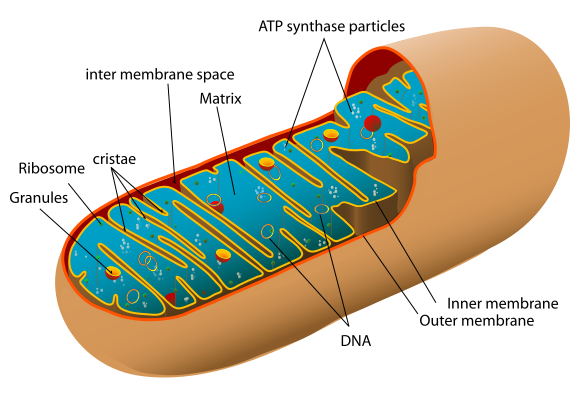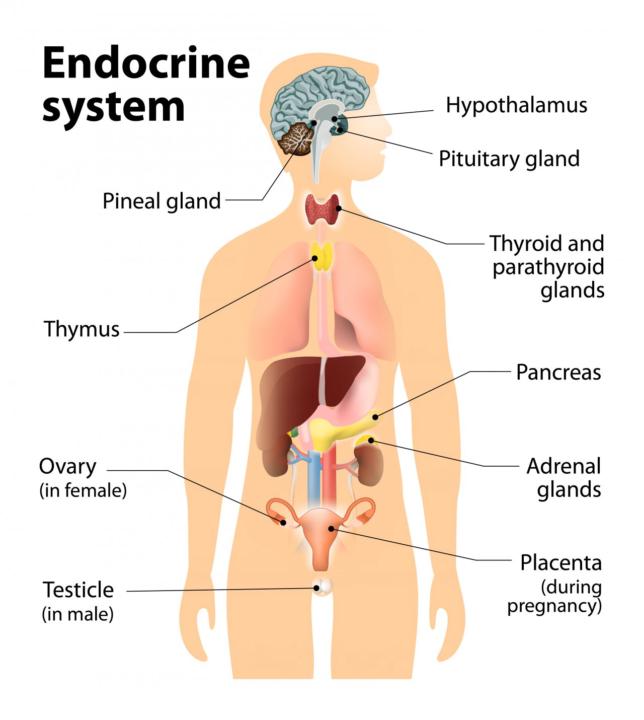Activity
Mon
Wed
Fri
Sun
Nov
Dec
Jan
Feb
Mar
Apr
May
Jun
Jul
Aug
Sep
Oct
What is this?
Less
More
Memberships
Creatively Unplugged
211 members • Free
Crochet Babes
417 members • Free
Crochet Creations
327 members • Free
Fit 'n Healthy Forever
612 members • Free
52 contributions to Fit 'n Healthy Forever
10 Toxic Household Scented Products
Scented products are everywhere in the modern home, and many of them contain toxic fragrance chemicals, including phthalates, VOCs (volatile organic compounds), formaldehyde, and even synthetic musk compounds. These are linked to hormone disruption, respiratory issues, headaches, skin irritation, and long-term toxicity (especially in children and pets). 1. Plug-In Air Fresheners - Constantly emit synthetic fragrances and VOCs into the air. - Often contain phthalates, which are linked to hormone disruption. - Brands to be wary of: Glade PlugIns, Air Wick, Febreze plug-ins. 2. Aerosol Spray Air Fresheners - Used in bathrooms, living rooms, kitchens. - Contain propellants, solvents, and synthetic fragrance blends. - Can trigger asthma, migraines, and skin allergies. 3. Car Air Fresheners - Those popular tree-shaped or vent clip fresheners are loaded with fragrance oils and VOCs. - Small, enclosed spaces like cars make exposure worse. 4. Fabric or Upholstery Sprays - Marketed to “eliminate” odors (like Febreze), but actually mask them with chemicals. - Ingredients often undisclosed; may include formaldehyde releasers and synthetic musks. 5. Laundry Scent Boosters - Includes scent beads (like Downy Unstopables), dryer sheets, and scented detergents. - Can coat clothing in fragrance chemicals that rub off onto your skin all day. - Major source of indoor & outdoor air pollution from dryer vents. 6. Scented Candles - Often made from paraffin wax (petroleum-based) and scented with synthetic fragrance oils. - Can emit formaldehyde, benzene, and toluene when burned — especially in enclosed rooms. 7. Scented Toilet Paper & Tissues - Chemicals added for “fresh” smell near sensitive areas — can cause irritation or hormonal effects over time. 8. Personal Care Products - Shampoos, lotions, deodorants, body washes, perfumes, etc. - “Fragrance” on a label can legally hide hundreds of undisclosed chemicals.

Are these 5 Fears Holding You Back? (And How to Break Free)
The Five Fears That Hold Us Back - Do you recognize any of these in yourself or others? Fear of Change - Change can feel intimidating. We fear the unknown and the responsibility that comes with success, so we stay in our comfort zone, even if it means staying stuck. Fear of Failure: - The thought of failing, even once, makes us second-guess every step we take. But in reality, failure is just part of the process and can teach us what doesn’t work. Fear of Not Being Enough - We often think we’re not worthy of success or that we’ll never be able to achieve our goals. This fear keeps us from trying, or from pushing ourselves to the next level. Fear of Judgment - What will others think? We become so focused on external approval that we forget our own goals and values. We can’t live our lives waiting for others to say it’s okay to succeed. Fear of the Unknown - The future feels uncertain, and we avoid taking action because we can’t predict exactly how things will turn out. But without stepping into the unknown, growth is impossible. Let's have some FUN with this Fear stuff! FUN OVER FEAR (False. Evidence. Appearing. Real.) Solutions to Break Through the Fears - Embrace Small Changes - Instead of making a huge leap, take small steps toward change. Start with one new habit, and celebrate your wins. Every small step gets you closer to your goal. Reframe Failure- Stop seeing failure as the end. View it as a valuable lesson, an opportunity to grow, and a necessary part of success. Don’t be afraid to try, and fail, and try again. Good thing you didn't give up on that "walking thing" when you first started. 🤣 Pssst - and hey - you stuck with it. Bonus! Affirm Your Worth - Remind yourself daily that you’re enough. You don’t need to be perfect to succeed — you just need to be you. Trust that your efforts will pay off in time. Focus Inward - Stop seeking external validation. Your journey is yours, and your success doesn’t depend on others’ opinions. Trust your instincts and follow the path that feels right for you.
Poll
10 members have voted
Is It Really Your Metabolism… Or Are Your Mitochondria Crying for Help?
The Mitochondria Reset — Heal Your Energy, Hormones & Health from the Cell Up If you’ve ever said- - “Why am I so tired all the time?” - “Why can’t I lose weight like I used to?” - “Why does my brain feel foggy — like it’s not even mine?” - “Why do I feel older than I am?” Then it’s time to meet the real root cause that almost no one is talking about- Mitochondrial dysfunction. These tiny “batteries” in your cells are responsible for ALL your energy production, hormone signaling, fat-burning, detox, brain function, immune health, and even whether or not damaged cells are cleaned up before they turn into something more serious (like cancer). But here’s the truth that changes everything- Mitochondrial dysfunction is not the root cause of disease (*** Remember - Treat the Cause, Not the Symptom) — it’s the result of deeper, long-ignored insults like - - Seed oils, excess sugar, and processed food - Nutrient deficiencies - Environmental toxins (mold, metals, EMFs) - Poor sleep and circadian chaos - Chronic infections, stress, and even certain medications Over the next few weeks, we’ll walk you through- - What your mitochondria actually do (and how they’re silently driving your symptoms) - What causes them to break down — long before disease appears - How to start repairing them through food, light, movement, mindset & daily rhythms - Why this is the true key to lasting fat loss, energy, and graceful aging This series is not just about biology — it’s about taking your power back at the cellular level. Drop a comment below if you're ready to restore your energy, clarity, and metabolism from the inside out — and let’s get started.🎯

Do You have rocks in your Head?
WHAT is Calcification? Calcification is the buildup of calcium salts in body tissues where calcium doesn’t belong. - In healthy cases, calcification helps form bones and teeth. - In unhealthy cases, it contributes to arterial plaque, kidney stones, joint pain, and even pineal gland dysfunction. - It's essentially your body putting calcium in the wrong place at the wrong time. WHO Does It Affect Most? Calcification can affect anyone, but it’s more common in - - Adults over 40 (especially postmenopausal women and men with cardiovascular risk) - People with vitamin K2 deficiency - Those with chronic inflammation or oxidative stress - Anyone with kidney issues, hormonal imbalance, or poor metabolic health - People exposed to fluoride, aluminum, or heavy metals (linked to pineal calcification) WHERE Does Calcification Happen? Common sites include - - Pineal gland → linked to disrupted melatonin and circadian rhythm - Arteries (vascular calcification) → leading to heart disease and stroke - Kidneys → forming kidney stones - Joints → arthritis and stiffness - Breast tissue → seen on mammograms, may be benign or cancer-associated - Lungs, tendons, soft tissue → due to injury, inflammation, or age WHY Does It Happen? The body may deposit calcium abnormally when - 1. There’s damage or inflammation – the body sends calcium to "patch" the site 2. Calcium regulation is poor – due to low vitamin K2, magnesium deficiency, or hormonal imbalances 3. Fluoride exposure – accumulates in the pineal gland and may trigger calcium salt buildup 4. High calcium supplements or D without K2 – taking D3 alone can shunt calcium into tissues instead of bones. Consult with a qualified Health Professional knowledgeable in Nutrition & supplementation. 5. Aging and oxidation – free radicals damage tissues, attracting misplaced calcium WHEN Does It Begin? - Slowly, silently, and over time. - Most people begin experiencing some degree of soft tissue calcification after age 35–40, especially if sleep, diet, and detox pathways are not optimized. - Pineal gland calcification, in particular, has been seen even in children and teens exposed to fluoride, poor sleep, and blue light at night.
Pineal Gland for Fat Loss?
Pinealocytes are the main cells in the pineal gland, and their core job is producing and secreting melatonin, the hormone that regulates your sleep-wake cycle (circadian rhythm). So why do they matter to being FitnHealthy Forever — especially for women over 40? What Are Pinealocytes? - Specialized cells in your pineal gland (a small gland in the center of your brain). - They respond to light signals (via your eyes and suprachiasmatic nucleus). - In darkness, pinealocytes release melatonin — the master sleep and repair hormone. - In light, melatonin production shuts off. How Pinealocytes Affect Fat Loss, Hormones, and Healing 1. They Control Melatonin = Better Sleep = Fat-Burning at Night - Melatonin sets off deep, restful sleep, where your body releases growth hormone, repairs tissue, and burns fat. - Poor melatonin = shallow sleep = more hunger, more fat storage, less healing. 2. They Influence Hormonal Balance - Melatonin interacts with estrogen, progesterone, insulin, cortisol, and thyroid — all major players in weight, mood, and metabolism. - Healthy pinealocytes = smoother hormonal rhythms. 3. They Fight Inflammation and Aging - Melatonin is also a potent antioxidant produced by pinealocytes. - It protects your mitochondria (your energy engines) from oxidative stress — supporting more energy, a stronger immune system, and slower aging. But If Pinealocytes Are Dysfunctional... - Irregular light exposure (too much screen time, not enough sun) = melatonin suppression - Low melatonin = poor sleep, increased cortisol, insulin resistance, and more belly fat - Long-term? Higher risk of obesity, depression, burnout, and chronic disease FitnHealthy Forever Action Plan: Support Your Pinealocytes 1. Get natural sunlight within 30 minutes of waking to set your pineal rhythm. 2. Avoid screens and bright lights after sunset to let melatonin rise naturally. 3. Go to bed at the same time nightly (ideally 9:30–10:30 p.m.). 4. Sleep in a completely dark room — even small lights (clock) can interfere with melatonin. 5. Support with nutrients like magnesium and vitamin B6, which aid melatonin production. Check with a Health Professional first.

1-10 of 52
@laura-uettwiller-5310
Wife, Mom and Gma to 6 (3 boys; 3 girls)
Love to crochet, garden and jigsaw puzzles.
Active 44d ago
Joined Jun 4, 2025
Nebraska
Powered by


